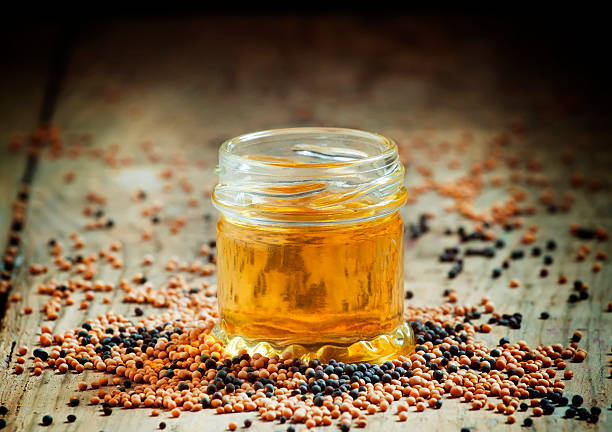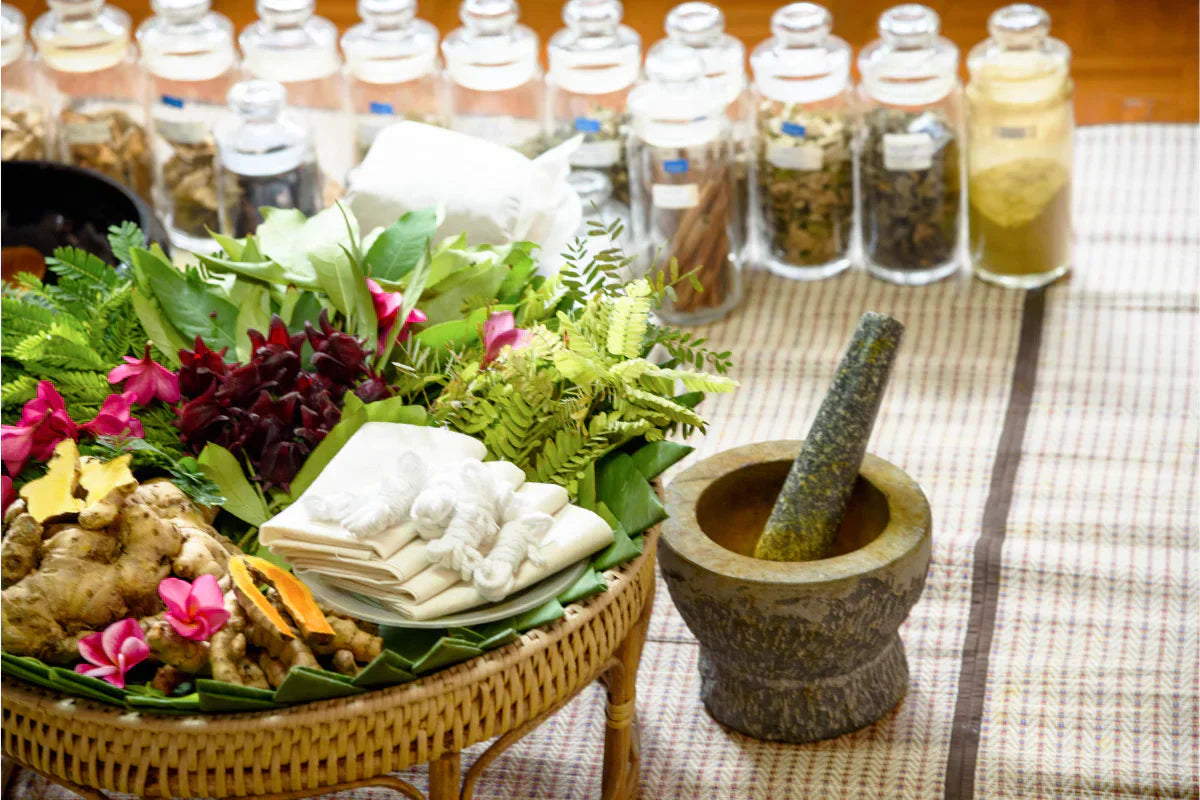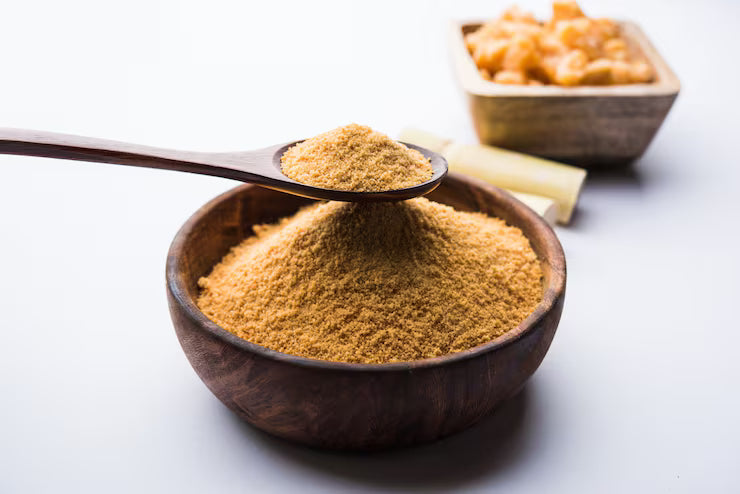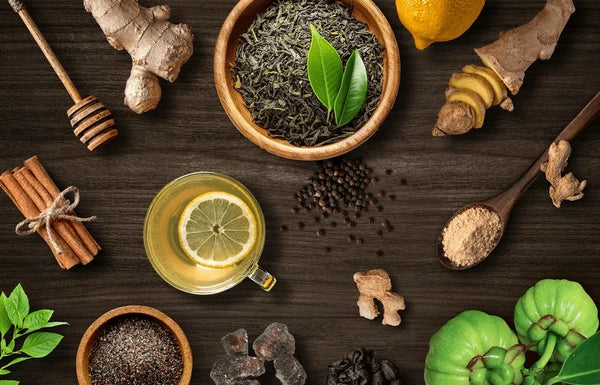The Complete Guide to Organic Turmeric – Benefits, Uses & Side Effects
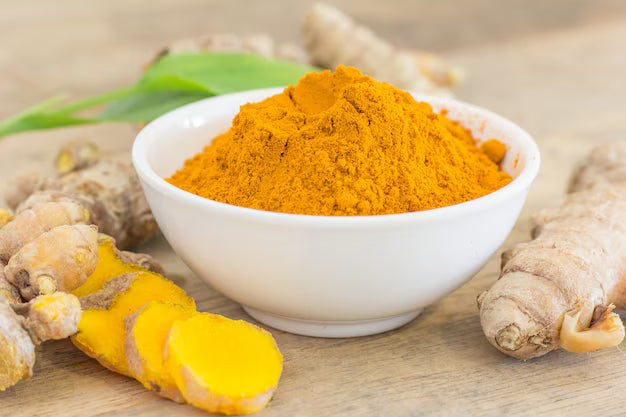
Turmeric: The Indian Herb with ‘Global’ Presence
In Ayurveda, turmeric is known as Haridra, meaning “the one that improves the complexion and purifies the body.” This golden rhizome has been revered for centuries for its deep healing power. It is considered both a natural purifier and a rejuvenator (Rasayana) that balances the Kapha and Vata doshas while supporting Pitta in moderation. With its Ushna Virya (heating energy), turmeric kindles digestion, purifies the blood, and enhances natural immunity.
The Sanskrit names Haridra and Rajani reflect its bright yellow hue and auspicious nature. Ayurveda also recognizes different types of turmeric, including Amba Haldi, which is often used for beauty and skin-related treatments. The key active compound in turmeric is curcumin, responsible for its anti-inflammatory, antioxidant, and immune-boosting effects.
Ayurvedic properties of Haridra:
-
Rasa (Taste): Tikta (bitter), Katu (pungent)
-
Guna (Quality): Laghu (light), Ruksha (dry)
-
Virya (Potency): Ushna (heating)
-
Vipaka (Post-digestive effect): Katu (pungent)
-
Dosha effect : Balances Kapha and Pitta, may aggravate Vata if overused
TL;DR – Turmeric: The Indian Herb with Global Presence
- Ayurvedic Essence: Known as Haridra, turmeric purifies the blood, balances Kapha and Vata, and acts as a Rasayana (rejuvenator) enhancing immunity and vitality.
- Organic Advantage: Organically grown turmeric retains higher curcumin content, free from chemicals, preserving its sattvic, healing energy and potency.
- Health Benefits: Supports digestion, detoxifies the liver, strengthens joints, enhances skin radiance, boosts immunity, and aids heart and brain health.
- Daily Usage: Can be added to food, consumed as turmeric milk or tea, applied as a skin lepa, or taken as Maharishi Ayurveda Turmeric Capsules for convenience.
- Precaution: Turmeric is heating (Ushna); overuse can aggravate Pitta causing acidity or skin irritation—use moderately and consult a Vaidya if needed.
The other types of Turmeric are :
Daru Haridra (Berberis aristata) – not a true turmeric; called 'Tree Turmeric’ because of its yellow bark.
Kasturi Haridra (Curcuma aromatica) – used in beauty and cosmetic preparations, not typically ingested.
Amba Haldi (Curcuma amada) – also called 'Mango Ginger’, used in culinary and cosmetic applications, is milder and aromatic.
What is Organic Turmeric?
Organic turmeric refers to turmeric grown without the use of synthetic fertilizers, pesticides, or chemical additives. It is cultivated using natural, sustainable farming methods that preserve soil fertility, protect biodiversity, and ensure the purity of the rhizome.
From an Ayurvedic perspective, the prana (vital life force) of herbs depends heavily on how they are grown and handled. Organic turmeric retains its full potency, aroma, and therapeutic energy, making it more effective in balancing doshas and delivering health benefits.
Key features of organic turmeric:
-
Grown in chemical-free soil using traditional compost and natural pest management.
-
Richer in curcumin and other phytonutrients due to pure cultivation methods.
-
Free from pesticide residues, preservatives, or artificial coloring.
-
Ensures sattvic quality, pure, nourishing, and energetically uplifting.
In short, organic turmeric is not just a cleaner version of regular turmeric; it’s a more sattvic, potent, and spiritually aligned herb, offering the full spectrum of Ayurvedic healing benefits in their purest form.
What are the Benefits Of Turmeric According to Ayurveda?
A popular therapeutic botanical in the contemporary world, Turmeric has always been one of Ayurveda’s most potent and versatile herbs throughout the centuries. It is known for the following benefits:
1. Provides doshic balance (particularly in the case of Kapha and Pitta).
2. Helps ignite the digestive fire (deepana) and promotes the breakdown of toxins.
3. Acts as a raktashodhak (blood purifier), keeping the body free of ama (toxins) and supporting clear, glowing skin.
As an immunity enhancer, Turmeric builds resilience and vitality.
4. Its well-documented anti-inflammatory, antimicrobial, and antioxidant properties help manage chronic inflammation, allergies, and infections.
5. A rasayana or rejuvenative tonic, Turmeric helps slow the aging process, strengthens organs, and promotes longevity.
What Are the Health Benefits of Turmeric?
Beyond its Ayurvedic properties, turmeric offers a wide range of health benefits supported by both traditional wisdom and modern science.
1. Supports Digestive Health
Turmeric enhances digestive enzyme secretion, reduces bloating, and helps prevent gas and indigestion. It also supports a healthy gut microbiome by reducing Ama (toxins) and promoting balanced digestion.
2. Promotes Heart Health
Curcumin, the active component in turmeric, may help maintain healthy cholesterol levels, improve circulation, and reduce oxidative stress on the cardiovascular system.
3. Boosts Immunity
Turmeric strengthens Ojas, the essence of vitality and immunity, protecting the body against seasonal infections, colds, and flu.
4. Reduces Inflammation and Joint Pain
Its potent anti-inflammatory properties make turmeric helpful in arthritis, joint stiffness, and muscle pain, offering natural relief without side effects.
5. Supports Liver Function and Detoxification
As a natural detoxifier, turmeric enhances liver enzymes and promotes bile flow, helping eliminate toxins and supporting overall metabolic health.
6. Improves Skin and Complexion
Turmeric purifies the blood (Raktashodhak) and adds natural radiance to the skin. It helps reduce acne, scars, and pigmentation, giving the skin a healthy glow.
7. Enhances Brain Function
Research shows curcumin can improve mood, memory, and focus by supporting neurotransmitter balance and reducing inflammation in the brain.
8. Balances Blood Sugar
Regular, moderate use of turmeric helps regulate blood glucose levels and may prevent insulin resistance when combined with a healthy diet.
9. Strengthens Respiratory Health
Its Kapha-reducing action helps relieve congestion, cough, and seasonal allergies. Turmeric milk or turmeric-honey paste is often used for respiratory comfort.
10. Natural Antioxidant and Anti-Aging Herb
Turmeric’s antioxidant action protects cells from free-radical damage, slows signs of aging, and maintains vitality.
What are the Different Ways to Use Organic Turmeric Daily?
1. In Cooking
Add a pinch of turmeric powder to dals, curries, soups, or vegetables. It enhances flavor, supports digestion, and boosts immunity.
2. Raw Turmeric (Kachi Haldi)
Consume fresh slices of raw turmeric with honey or warm milk, especially during winter, as a natural tonic to strengthen immunity and fight cold-related issues.
3. External Application (Lepa)
Apply turmeric paste on acne, scars, or wounds. Its antiseptic and anti-inflammatory properties help heal skin infections and reduce blemishes.
4. As Decoction (Kadha)
Boil turmeric with ginger, black pepper, and tulsi to prepare a natural remedy for coughs, colds, and throat irritation.
5. Turmeric Capsules
For convenient daily use, Maharishi Ayurveda Turmeric Capsules provide standardized curcumin with natural absorption enhancers. These capsules support joint flexibility, liver detox, and overall immunity, ideal for those seeking an easy, consistent supplement form.
6. Turmeric Herbal Tea
Sip on Maharishi Ayurveda Turmeric Ginger Tea to enjoy turmeric’s benefits in a comforting beverage. This blend combines turmeric, ginger, and black pepper to promote warmth, digestion, and natural immunity, a perfect caffeine-free daily ritual.
7. Kachi Haldi vs. Dried Haldi
Kachi Haldi (Raw Turmeric): Stronger and more potent, best for topical or fresh preparations.
Dried Haldi (Powder): Convenient for daily cooking, long-term storage, and internal use.
Turmeric with Water or Milk: When & How to Drink It?
Ayurveda prescribes different ways to consume turmeric depending on the time of day and purpose.
-
Golden Milk (Haldi Doodh): When taken at night, turmeric with warm milk helps build immunity, supports deep sleep, and aids tissue repair. This combination is nourishing and grounding, ideal for Vata-dominant individuals.
-
Turmeric Water: When taken in the morning with warm water, it acts as a detoxifier, cleansing the liver and stimulating metabolism. This form is better suited for Kapha and Pitta constitutions.
The best time to take turmeric depends on the desired effect: morning for cleansing and detoxification, and night for rejuvenation and rest. Turmeric tea is light and cleansing, while turmeric milk is nourishing and strengthening.
What are the Benefits of Organic Turmeric for Skin and Beauty?
Turmeric is a cornerstone of Ayurvedic beauty rituals, known for brightening the complexion and healing the skin. It helps reduce acne, scars, and pigmentation through its antibacterial and anti-inflammatory properties. A raw turmeric lepa applied with rose water or sandalwood powder naturally lightens underarms and blemishes.
Amba Haldi, a special variety of turmeric, is especially prized in Ayurveda for its cosmetic uses. Traditionally used in bridal skincare rituals, it imparts a golden glow and keeps the skin clear and radiant. Regular use of turmeric externally helps maintain youthful, healthy skin and supports inner cleansing reflected through outer beauty.
Dosage: How Much Turmeric Is Safe Daily?
The ideal dose of turmeric depends on the form and purpose of use. As a culinary spice, ½–1 teaspoon (2–3 grams) of turmeric powder per day is generally safe for adults. Raw turmeric can be consumed in small slices—about 1–2 pieces daily with honey or warm milk.
For therapeutic use or in supplement form, follow your Ayurvedic physician’s recommendation. Children and the elderly should take smaller doses, and pregnant women can safely use turmeric as a spice but should avoid concentrated extracts or capsules unless advised by a Vaidya.
What are the Side Effects of Turmeric (If Overused)?
-
Heating nature (Ushna Virya): Excess use can aggravate Pitta dosha, leading to acidity, rashes, or a feeling of heat in the body.
-
Skin sensitivity: Some may experience allergic reactions like redness or itching from topical use.
-
Health precautions: Avoid high doses if you have gallstones, bleeding disorders, or take blood thinners.
-
Overdose signs: Nausea, excessive body heat, or loose stools
-
Ayurvedic advice: Use turmeric in moderation and in the right form and dosage to enjoy its full benefits safely.
Conclusion
Turmeric is far more than a kitchen spice; it is a daily Ayurvedic elixir that supports cleansing, healing, and rejuvenation. When used wisely and moderately, it strengthens digestion, purifies the blood, enhances skin glow, and builds immunity.
Incorporate turmeric into your daily life, add it to your meals, drink it as golden milk for nourishment, or apply it externally for skin health. The Ayurvedic principle remains timeless: right dose, right form, right time.
For chronic health conditions or specific imbalances, always consult a qualified Ayurvedic practitioner to tailor the dosage and usage to your constitution.
FAQs
1. Is turmeric hot or cold in nature?
Ayurveda classifies turmeric as Ushna (heating).
2. Can I apply turmeric to my face daily?
Yes, but use in small amounts and mix with soothing bases (curd, rose water, aloe vera).
3. Can turmeric cause any side effects?
In excess, it can trigger acidity, rashes, or digestive upset, especially in Pitta types.
4. Can turmeric lighten skin tone?
It does not bleach skin but helps improve complexion, reduce blemishes, and give natural radiance.
Also Read :
Triphala: Benefits, Uses, and How to Take It–>
What Is Moringa Powder? Benefits, Side Effects, and How It’s Made–>
Ayurvedic Guide to Sandalwood: Skin Benefits, Uses & Side Effects—>
Popular Posts

Why Winter Makes Your Knees Ache: Vata-Balancing Tips & How to Use Pirant Oil
22 Dec, 2025Winter often brings an unwelcome rise in knee pain. Modern science and Ayurveda explain why joint...
Read more
Why Oral Care is a Daily Detox Ritual in Ayurveda
22 Dec, 2025Introduction — The Mouth as the Gateway to Health In Ayurveda, digestion is the foundation of ...
Read more
How to Improve Gut Health with Ayurveda
19 Dec, 2025Introduction Ayurveda has always emphasised that the root of health and disease lies in the gu...
Read more


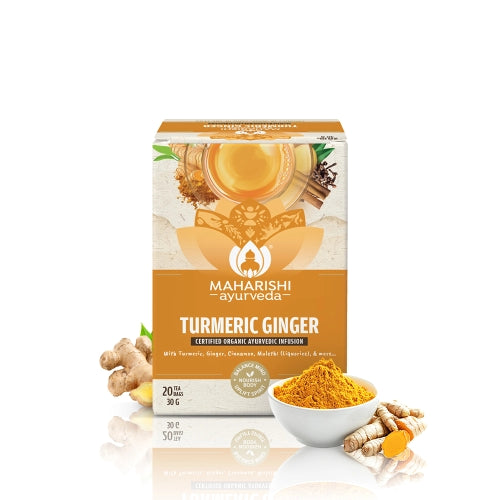




 Popular Read
Popular Read


































